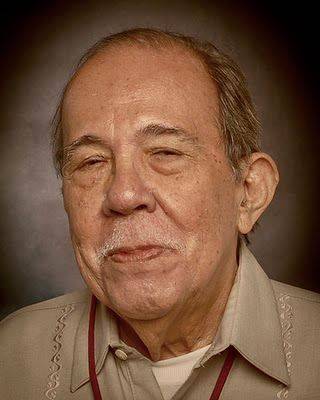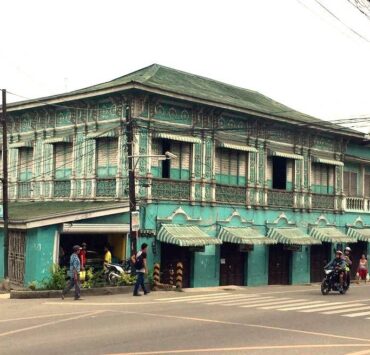Film council offers cash grants for preserving National Artists’ legacy

To bridge the gap in information about the country’s National Artists for Film and Broadcasting, the Film Development Council of the Philippines (FDCP) is offering grants of up to P2 million for projects that spotlight their contributions to the industry.
FDCP chair Jose Javier Reyes said that the council has already given a grant to award-winning filmmaker Baby Ruth Villarama to produce a documentary on the late filmmaker Eddie Romero.
“This will be launched sometime in September to celebrate Eddie’s 100th birthday. If all goes well, we plan to create documentaries on each and every National Artist for Film and Broadcasting to ensure that their contributions are documented and recognized,” Reyes told reporters in a recent media gathering.
Alongside Romero, the following late artists have been recognized as National Artists for Film and Broadcasting: Lamberto Avellana, Lino Brocka, Manuel Conde, Gerardo de Leon, Fernando Poe Jr., and Marilou Diaz-Abaya.
The only living National Artists in this category are Kidlat Tahimik, Ricky Lee, and Nora Aunor.
In September 2024, the FDCP honored these artists in a ceremony to celebrate the Philippine Film Industry Month. Now, the council is taking it a step further by funding documentaries, research projects, books, and other creative works dedicated to them.
“We will provide up to P2 million per project—whether it’s a research study or a creative work—focused on any of these National Artists,” Reyes announced, adding that there is a proposal from critic-culture and arts professor Nicanor Tiongson to write a book about De Leon.

The Romero documentary is nearly complete, and Tiongson has already written a book on Conde, Reyes reported. Meanwhile, filmmaker and historian Nick Deocampo is working on pamphlets dedicated to each National Artist. “This is great because it makes these materials accessible to students and the public, both physically and online,” Reyes pointed out.
Reyes then encouraged filmmakers and researchers to submit their project proposals to the FDCP for evaluation. Hand in hand with these efforts is the restoration of films by National Artists. “This is just the first step in encouraging and developing Philippine documentaries. Our next goal is to promote animation,” Reyes said.
Film screenings
Also funded by the FDCP is the Valentine-themed film screening titled “Sine Sinta: Pag-ibig at Pelikula 2025,” which will culminate on Feb. 11. This special event features a double screening of two critically acclaimed films: Jopy Arnaldo’s “Gitling” and “Past Lives” by Korean-Canadian Celine Song.
“These are two of the most beautiful films I saw last year. They capture the full essence of romance,” Reyes said.
The screenings will be held at Ayala Malls Circuit, Trinoma, Market! Market!, and FDCP’s regional Cinematheques for only P200.
From March 5 to 19, the FDCP will showcase some of 2024’s best international films, including Oscar nominees “The Seed of the Sacred Fig” and “Flow,” along with standout titles such as “A Traveler’s Needs,” “Bird,” “Black Dog,” “Dahomey,” and “Young Hearts.”

“Cinema enthusiasts will love this lineup. We work hard to acquire the rights to these films because we know that mainstream distributors won’t bring them here. These films have made waves at major festivals like Berlin and Cannes, and now, Filipinos will get the chance to see them,” Reyes said proudly.
Tickets will be priced at P250 in Manila and P200 in the regions.
Meanwhile, the annual Sine Kabataan, a platform that helps emerging filmmakers develop their short films, is back for its eighth edition March 28-29. Finalists will receive grants and have the opportunity to participate in a mentorship program with industry veterans. Applications are open until Feb. 17.
“We love doing this every year because we get to see incredible short films made by young talents across the country. Last year’s winner came from Nabunturan, proving that regional filmmakers have exciting stories to tell. The Philippines is not just Manila. Sine Kabataan encourages young creators to share their own perspectives,” Reyes explained.
Also scheduled for March is a brand-new festival dedicated to Filipino animation. Titled “Inanimate: The Animation Film Festival,” the event will showcase works from established filmmakers and rising student talents, aiming to spark renewed interest in animated films.
“We want audiences to appreciate the incredible talent of Filipino animators. The sad reality is that many of them get recruited by foreign studios. We need to encourage them to create Filipino animation,” Reyes pointed out.
“If we can be inspired by films like ‘Flow’ or ‘Memoirs of a Snail,’ imagine the amazing stories that Filipino animators can bring to life,” he added.

















